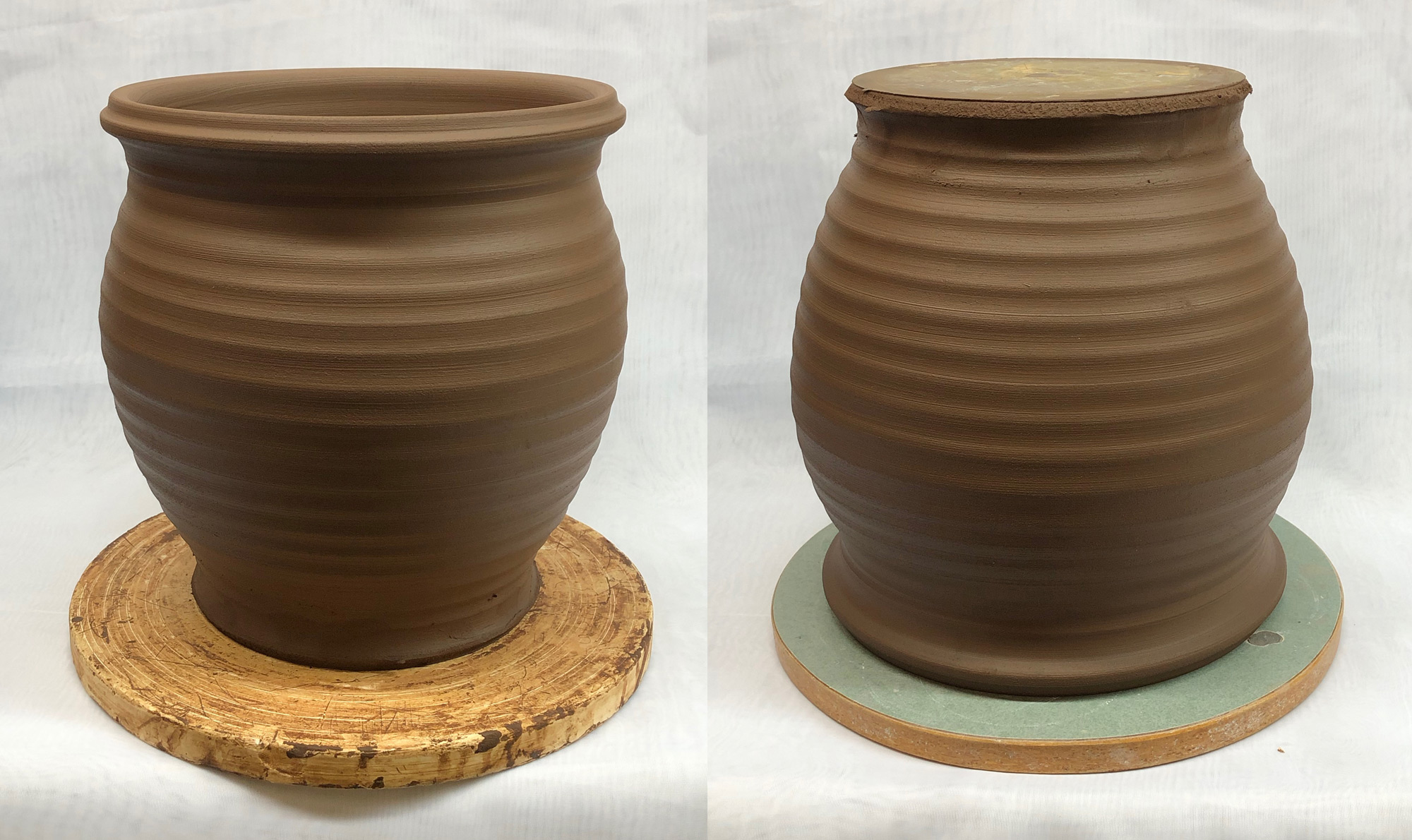Why throw on a plaster bat when making larger pieces?
To achieve more even drying. As soon as was practical after throwing (a few hours), I covered the piece with a cloth and then put a garbage bag over it. While that put the upper section a little ahead of the base in drying, over night the base caught up (the plaster sucks the water out of it, even the walls of the piece stiffen). In the morning I remove the plastic and within an hour or two it is ready to lift off the bat and turn over, shortly after that I can trim it. I secure each plaster bat to the wheel-head using a "Batmate", that works extremely well. To stick the clay to the plaster well I apply a thin layer of slip, round off the piece of clay and firmly slam it down onto the plaster (if it is not rounded it will not stick as well or may break the bat). This is quick and effective to achieve the even drying needed to avoid a drying crack. This method is especially important for large plates and bowls, which often suffer s-cracks.
Pages that reference this post in the Digitalfire Reference Library:
Drying Ceramics Without Cracks, Wanna throw porcelain plates with thick bottoms and thin rims?, Making your own plaster bats is easier than you might think, Plaster Bat, Potter's Wheel, Throwing

This post is one of thousands found in the Digitalfire Reference Database. Most are part of a timeline maintained by Tony Hansen. You can search that timeline on the home page of digitalfire.com.
